Tag: ethnology
Kuka on saamelainen ja mitä on saamelaisuus – identiteetin juurilla [Who is a Sámi and what being Sámi means – looking for the roots of identity]
30 January 2014 | Mini reviews, Reviews
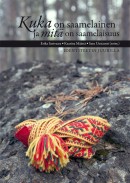 Kuka on saamelainen ja mitä on saamelaisuus – identiteetin juurilla
Kuka on saamelainen ja mitä on saamelaisuus – identiteetin juurilla
[Who is a Sámi and what being Sámi means – looking for the roots of identity]
Toim. [Ed. by]: Erika Sarivaara, Kaarina Määttä & Satu Uusiautti
Rovaniemi: Lapin yliopistokustannus (Lapland University Press), 2013. 182 pp.
ISBN 978-952-484-651-6
€29, paperback
This anthology updates one of the most burning questions, one which also has political consequences: who has the right to belong to an indigenous people, and who is entitled to define it? Of the approximately 100,000 Sámi – the only indigenous people in the European Union – around 7,000 live within Finnish territory. The writers represent Sámi research at the Lapland University, and they examine the definition of ‘the Sámi without a status’, i.e. people not included on the election list for the Sámi Parliament. The book questions the prevailing discourse, which characterises Sámi history as a withdrawal from the progress of civilisation; this is interpreted as a survival strategy, and the Sámi are not primarily regarded as the victims of colonialism and modernisation. The work also highlights the inner hierarchies of the Sámi and analyses both the reindeer-farming Sámi, regarded as elite, as well as the marginalia, the Sámi who engage in forestry and agriculture to make a living. Articles are sensitive, sometimes provocative, and they shine a spotlight on every ethnic group as well as the fundamental questions of the individual, the right to one’s own identity, language and history.
Forest and fell
8 May 2013 | Reviews
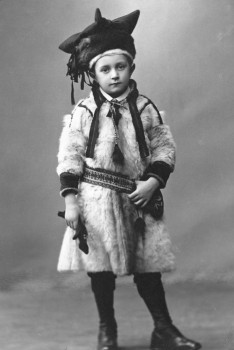
From North to South: young Heikki Soriola on his way to represent Utsjoki in Helsinki, in 1912. Photo from Saamelaiset suomalaiset
Veli-Pekka Lehtola
Saamelaiset suomalaiset: Kohtaamisia 1896–1953
[Sámi, Finns: encounters 1896–1953]
Helsinki: Suomalaisen Kirjallisuuden Seura, 2012. 528 p., ill.
ISBN 978-952-222-331-9
€53, hardback
Leena Valkeapää
Luonnossa: Vuoropuhelua Nils-Aslak Valkeapään tuotannon kanssa
[In nature, a dialogue with the works of Nils-Aslak Valkeapää]
Helsinki: Maahenki, 2011. 288 p., ill.
ISBN 978-952-5870-54-1
€40, hardback
The study of the Sámi people, like that of other indigenous peoples, has become considerably more diverse and deeper over recent decades. Where non-Sámi scholars, officials and clergymen once examined the Sámi according to the needs and values of the holders of power, contemporary scholarship starts out from dialogue, from an attempt to understand the interactions between different groups. More…
On the road, in the world
21 March 2013 | Reviews
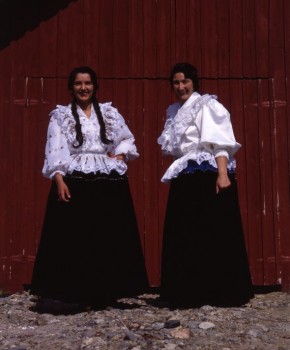
In Romani dress: Finnish Romani women still wear their traditional velvet skirts (which weigh 5-8 kilos). Photo: Topi Ikäläinen, 1983
Suomen romanien historia
[A history of Finland’s Romani people]
Toimittanut [Edited by] Panu Pulma
Helsinki: Suomalaisen Kirjallisuuden Seura (the Finnish Literature Society), 494 p., ill.
ISBN 978-952-222-364-7
€57, hardback
The Romani people set out from India around a thousand years ago; there are those who even claim that they originated in Egypt long before that. This latter account was favoured among the Romani in Europe, and so their leaders took to styling themselves the Dukes of ‘Egypt Minor’ or ‘Little Egypt’.
The Romani of Europe are generally considered to have come from northern India in the 15th century. They arrived in Finland – which at that time was part of Sweden – in 1512.
Five hundred years later, it seems a fitting time to publish Suomen romanien historia, a volume edited by Panu Pulma, PhD, a university lecturer in Finnish and Nordic history, with chapters contributed by a total of 14 additional experts.
The Romani who reached Stockholm, also in 1512, were said to be from ‘Egypt Minor’. This purported connection with Egypt is the origin behind the English word gypsy. The Swedish word zigenare (related to the German Zigeuner) did not come into use until the 17th century. More…
Gypsy life
21 March 2013 | Extracts, Non-fiction
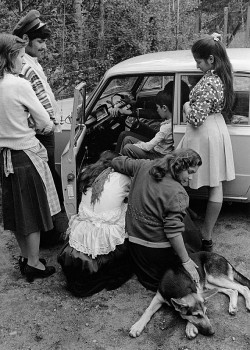
Romani teenagers, Kouvola, 1976. Photo: Mikko Savolainen
Photographer Mikko Savolainen began taking photos of Finnish Romani life in the 1960s, in the time of transition from nomadism to life in housing estates. New trends in the 1960s and 1970s also brought Romani culture to the fore – singers, musicians, festivals; an act baning racial discrimination had been passed. Savolainen became interested in Gypsy life
The text and the photographs are from Suomen romanit. Romanielämää 1960–1970-luvuilla / The Roma of Finland. Roma life in the 1960s and 1970s (Musta Taide, 2008. English translation: Jüri Kokkonen)
I have visited over a hundred Roma homes. Respect for parents, care of the elderly and hospitality are the first things that come to mind.
I have come across similar consideration for visitors only in cottages in Karelia, where the first question was whether I wanted a cup of coffee or to eat first.
I took my first photographs of Roma people in the Market Square of Hamina as an amateur photographer who only wanted to take good portraits. More…
Maailman paras maa [The best country in the world]
14 March 2013 | Mini reviews, Reviews
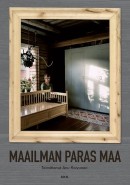 Maailman paras maa
Maailman paras maa
[The best country in the world]
Toim. [Ed. by] Anu Koivunen
Helsinki: Suomalaisen Kirjallisuuden Seura, 2012. 255 p., ill.
ISBN 978-952-222-347-0
€ 37, paperback
In this book twelve writers, representing various fields of research, ponder Finland and Finnishness from the viewpoint of history, ethnology, society, culture and economics. Finland-Swedishness and the relationship between Finns and Russians, the need of Finns to defend their participation in the Second World War in alliance with Germany as a ‘separate war’, and the nostalgia related to lost Karelia. The articles deal with Finland facing economic challenges, attitudes towards foreign beggars and self-critical Finnish opinion pieces. They also take a look at Finnish man as portrayed in the classic novel Seitsemän veljestä (‘The seven brothers’, 1870, by Aleksis Kivi) and in a recent prize-winning film about men talking in the sauna about their feelings, and discuss the relationship of the two national languages, Finnish and Swedish. Well-written and original articles question truisms and challenge the reader contemplate his or her own relationship with Finnishness.
Volgan mutkasta Siperiaan. Sukulais-kansat tämän päivän Venäjällä / From the Volga to Siberia. The Finno-Ugric Peoples in Today’s Russia
17 August 2012 | Mini reviews, Reviews
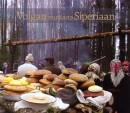 Volgan mutkasta Siperiaan. Sukulaiskansat tämän päivän Venäjällä
Volgan mutkasta Siperiaan. Sukulaiskansat tämän päivän Venäjällä
Toim. [Ed. by] Ildikó Lehtinen
Helsinki: Finnish Literature Society, 2012. 190 p, ill.
ISBN 978-952-222-345-6
€48, paperback
English-language edition:
From the Volga to Siberia. The Finno-Ugric Peoples in Today’s Russia
ISBN 978-952-222-346-3
€57, paperback
Finno-Ugric peoples make up 2.4 million of Russia’s inhabitants. This book examines the Khanty, Komi, Mari, Mordvins and Udmurt who live on the western side of the Urals, between the Volga River Bend and Western Siberia. The focus is on their ethnic identity, recent history and present-day life. Various points of view are represented in articles by expert scholars, and the subjects include language, literature, theatre, social life, and the status of the family and of women. These national cultures recovered after the most difficult part of the Soviet period, but in today’s Russia they and their languages are increasingly at risk of dying out. Russification is advancing not only because of government, but also as a result of industrialisation and urbanisation. Half of the population of these groups live in rural areas where traditions and folk beliefs are particularly strong. Photographs from different eras and drawings by Udmurt children depict the story of the indigenous cultures and the changes they have undergone. Some of the articles also shed light on the harsh situation of other Finnic peoples in Russia.
Translated by David McDuff
